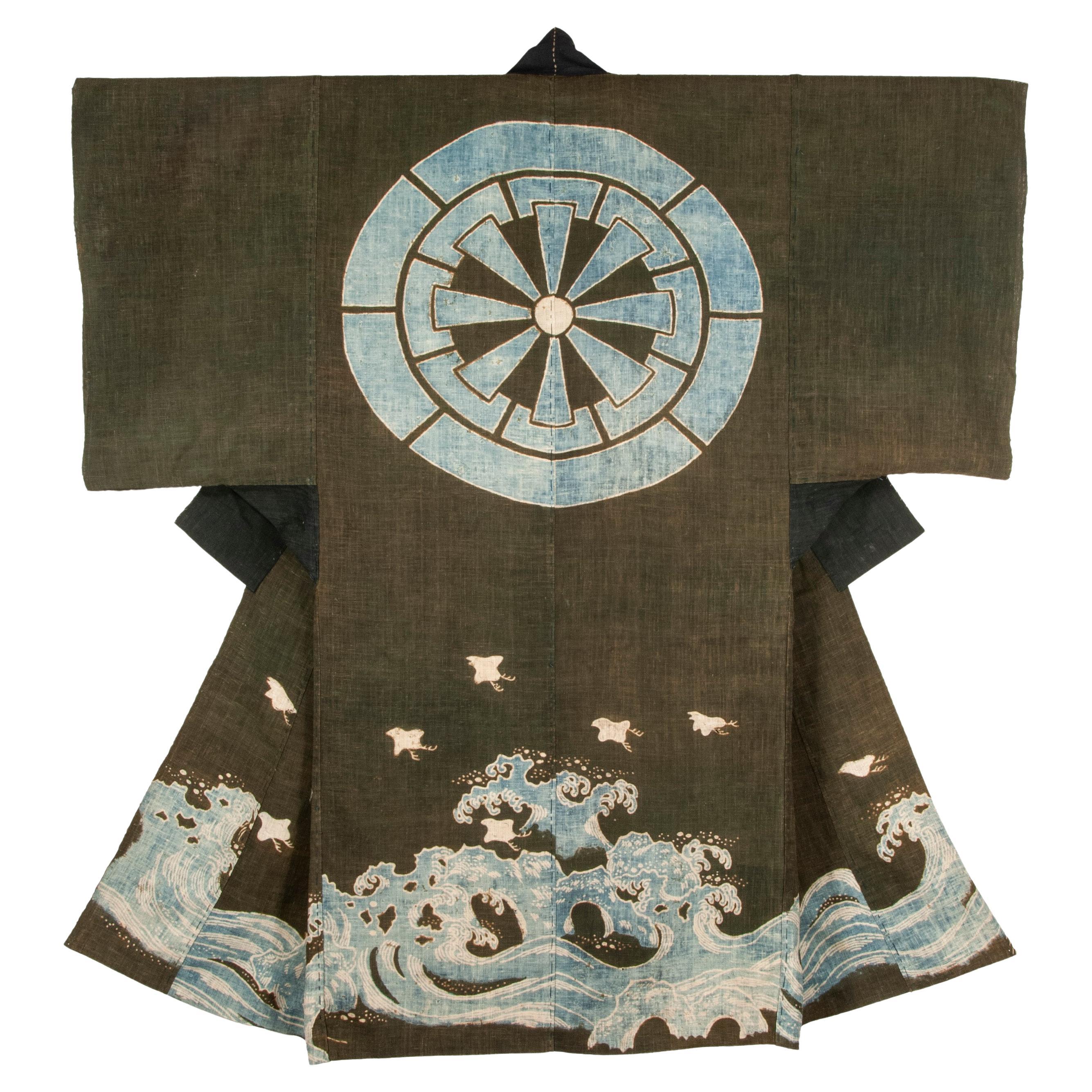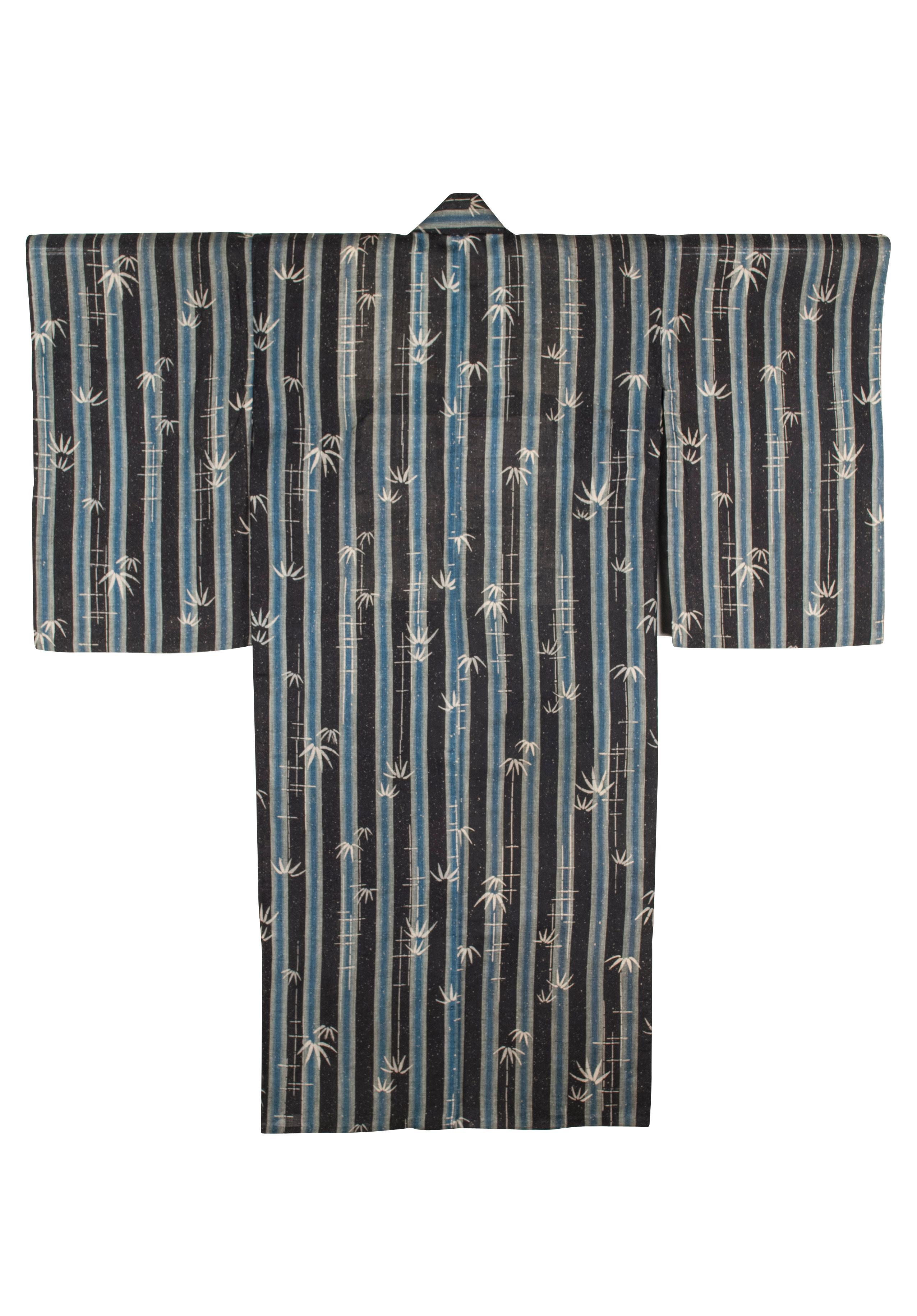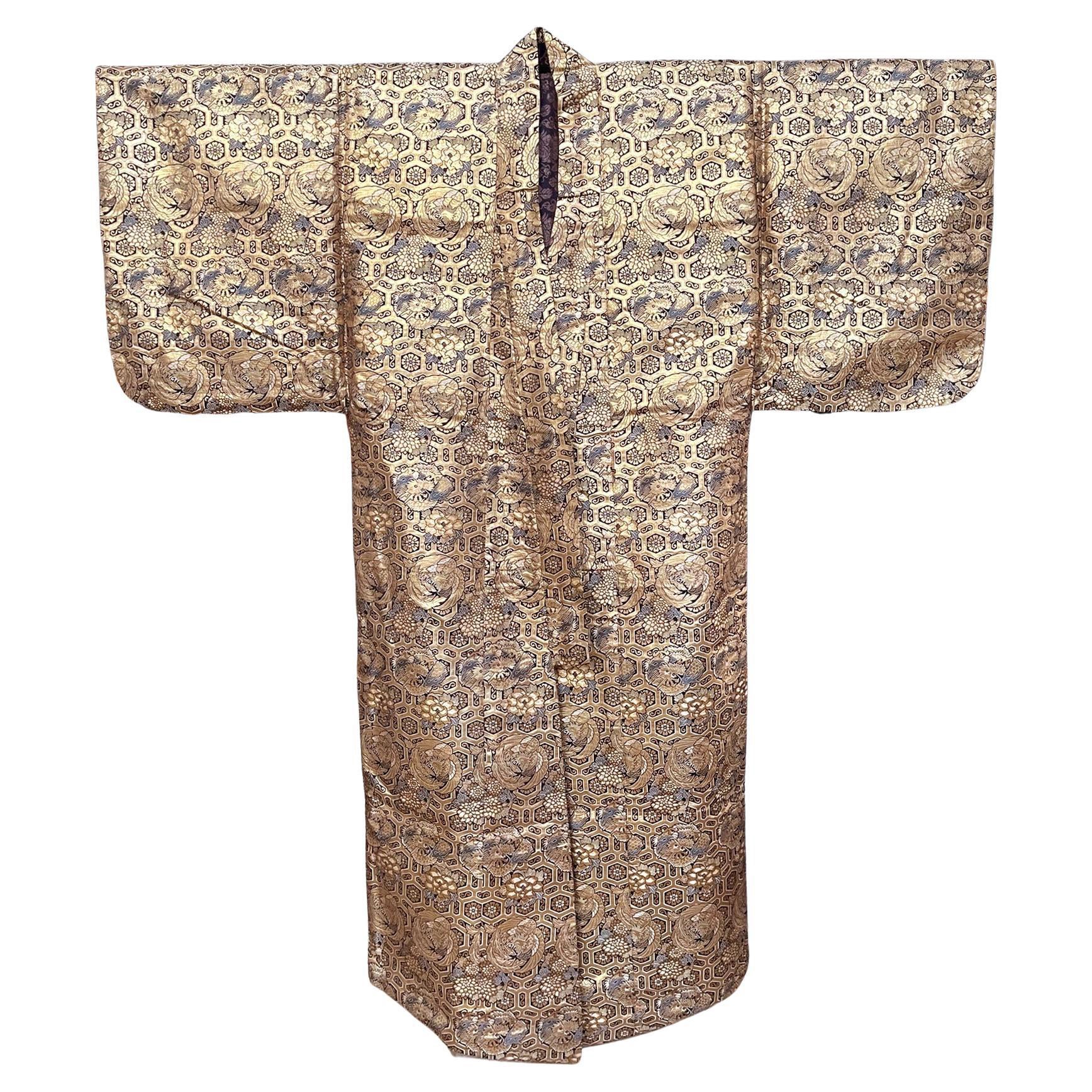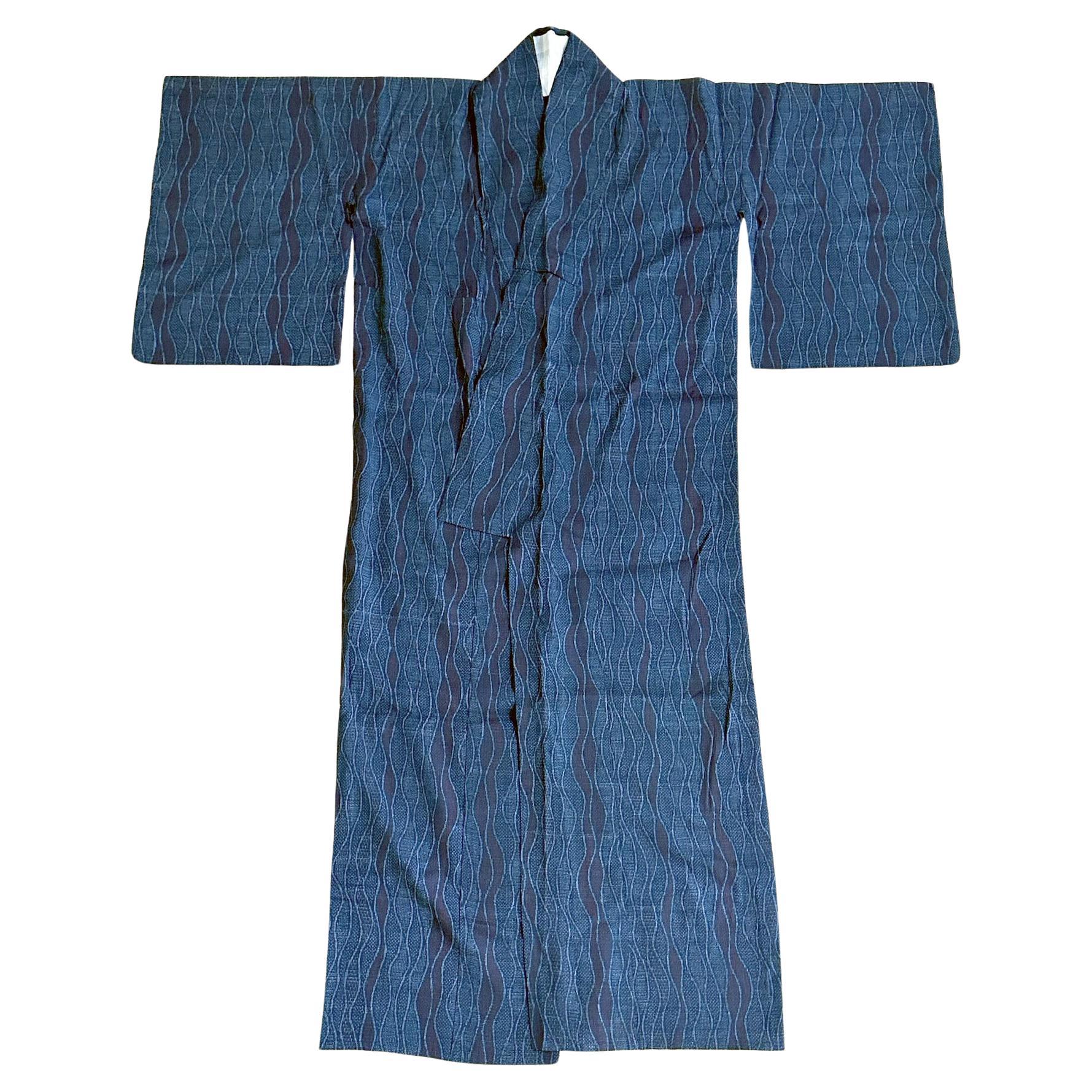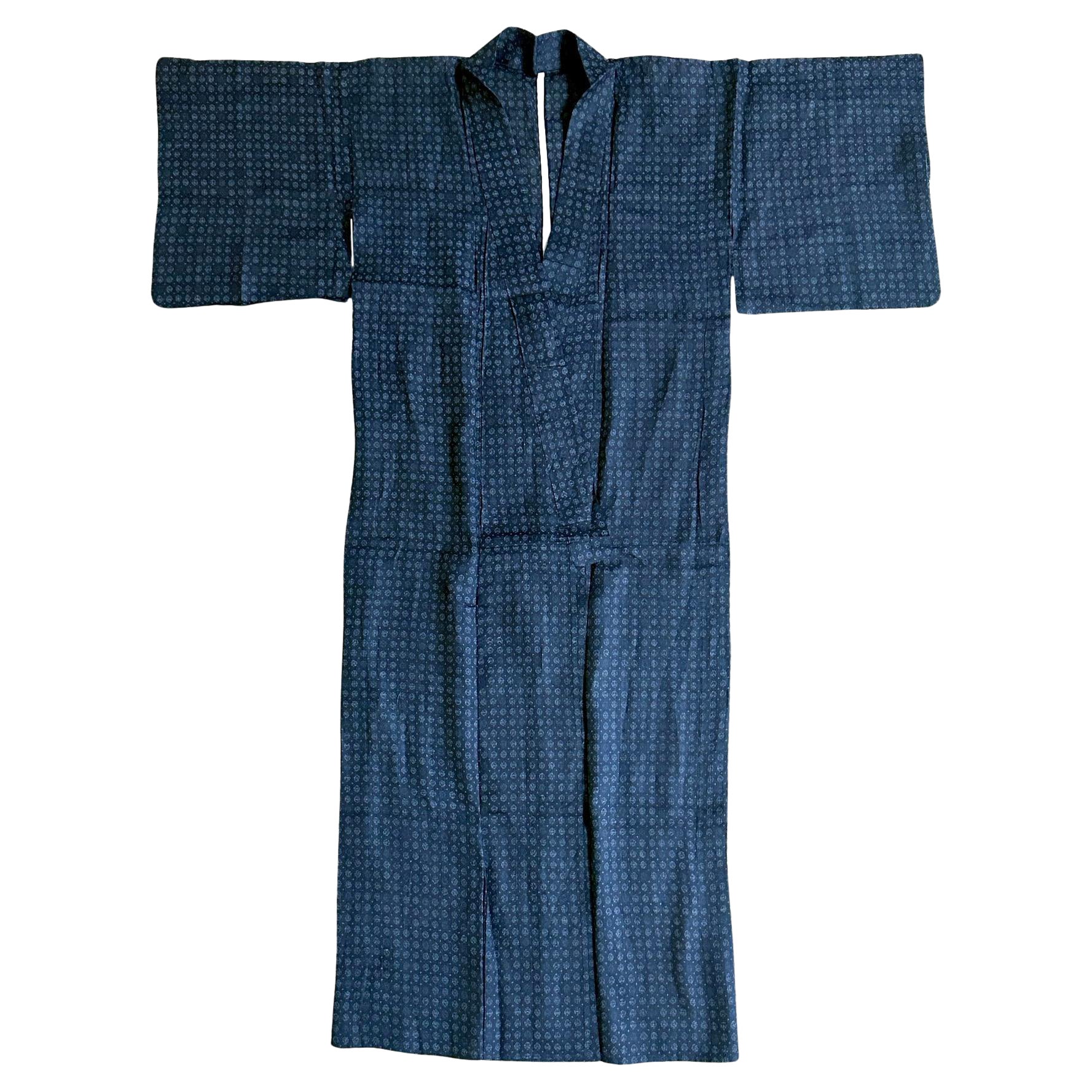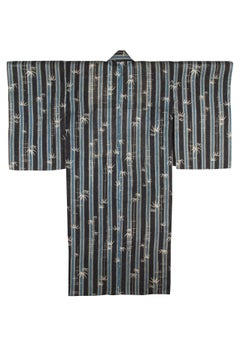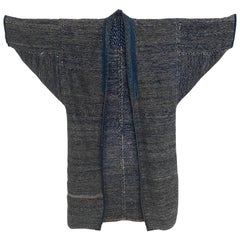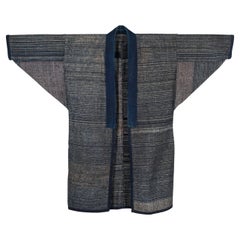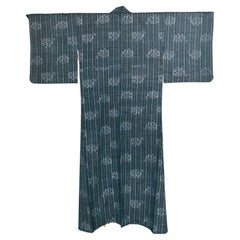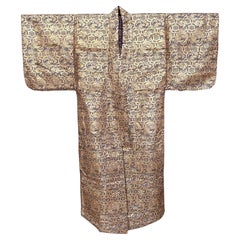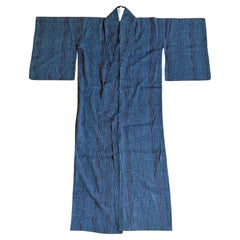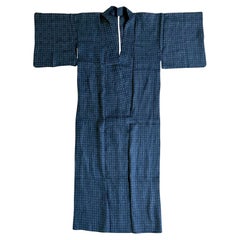Items Similar to Late Meiji Period Sleeping Kimono / Yogi, Japan
Want more images or videos?
Request additional images or videos from the seller
1 of 8
Late Meiji Period Sleeping Kimono / Yogi, Japan
$1,750
£1,327.86
€1,518.29
CA$2,444.28
A$2,717.70
CHF 1,419.03
MX$33,081.05
NOK 18,106.25
SEK 16,964.70
DKK 11,331.27
Shipping
Retrieving quote...The 1stDibs Promise:
Authenticity Guarantee,
Money-Back Guarantee,
24-Hour Cancellation
About the Item
Late Meiji Period sleeping Kimono / Yogi, Japan
Yogi are a type of oversized sleeping kimono traditionally used in Japan. This kimono would have been stuffed with cotton wadding similar to a futon. The cotton and lining have been removed, leaving only the outer over-sized kimono. The collar was likely replaced a number of times during the life of this yogi.
- Dimensions:Height: 60 in (152.4 cm)Width: 56 in (142.24 cm)Depth: 2 in (5.08 cm)
- Style:Tribal (In the Style Of)
- Materials and Techniques:Cotton,Hand-Woven
- Place of Origin:
- Period:
- Date of Manufacture:1868-1911
- Condition:Wear consistent with age and use. Very good condition with minor repairs.
- Seller Location:Point Richmond, CA
- Reference Number:Seller: JR#0231stDibs: LU1778219388632
About the Seller
5.0
Platinum Seller
Premium sellers with a 4.7+ rating and 24-hour response times
Established in 1999
1stDibs seller since 2015
687 sales on 1stDibs
Typical response time: 2 hours
- ShippingRetrieving quote...Shipping from: Santa Fe, NM
- Return Policy
Authenticity Guarantee
In the unlikely event there’s an issue with an item’s authenticity, contact us within 1 year for a full refund. DetailsMoney-Back Guarantee
If your item is not as described, is damaged in transit, or does not arrive, contact us within 7 days for a full refund. Details24-Hour Cancellation
You have a 24-hour grace period in which to reconsider your purchase, with no questions asked.Vetted Professional Sellers
Our world-class sellers must adhere to strict standards for service and quality, maintaining the integrity of our listings.Price-Match Guarantee
If you find that a seller listed the same item for a lower price elsewhere, we’ll match it.Trusted Global Delivery
Our best-in-class carrier network provides specialized shipping options worldwide, including custom delivery.More From This Seller
View AllRare Antique Japanese Oversized Sleeping Kimono (Yogi)
Located in Point Richmond, CA
Rare Antique Japanese Oversized Sleeping Kimono (Yogi)
This is the outer shell of a type of shaped sleeping kimono known as a yogi. Yogi were in more common use during the Edo and M...
Category
Antique Late 19th Century Japanese Meiji Tribal Art
Materials
Cotton, Linen
Taisho-Early Showa Period Japanese Stencil-Dyed Summer Kimono with Bamboo Motif
Located in Point Richmond, CA
Taisho-Early Showa period Japanese Stencil-Dyed Summer Kimono with bamboo Motif
A light-weight summer kimono woven of both cotton and silk, and patter...
Category
Mid-20th Century Japanese Taisho Textiles
Materials
Cotton, Silk
Saki-Ori Farmers Coat, Northern Japan, Meiji Period
Located in Point Richmond, CA
Saki-ori farmers coat, Northern Japan, Meiji period
A very heavy and substantial saki-ori coat, made of cotton with an indigo kasuri lapel. Several patches of hand sewn stitching ...
Category
20th Century Japanese Meiji Textiles
Materials
Cotton
Antique Japanese Recycled Zanshiori Jacket
Located in Point Richmond, CA
Antique Japanese Recycled Zanshiori Jacket
Zanshi-ori cloth is woven from leftover cotton and silk threads, either from commercial kimono production or from home-produced recycled y...
Category
Early 20th Century Japanese Taisho Tribal Art
Materials
Cotton, Silk
Antique Japanese Indigo-Dyed Double Ikat Kimono
Located in Point Richmond, CA
Antique Japanese Indigo-Dyed Double Ikat Kimono
This deeply saturated indigo-dyed kimono is made of heavy-weight hand-spun cotton and precisely patter...
Category
Early 20th Century Japanese Taisho Tribal Art
Materials
Cotton
Antique Japanese Recycled Saki-Ori Farmer’s Jacket
Located in Point Richmond, CA
Antique Japanese Recycled Saki-Ori Farmer’s Jacket
This early 20th C farmer’s jacket from the northern Japan sea coast region was strip woven from repurposed cotton scraps in a tech...
Category
Early 20th Century Japanese Taisho Tribal Art
Materials
Cotton
You May Also Like
Japanese Woven Linen Kimono with Katazome Stencil Dyes
Located in Atlanta, GA
On offer is a Japanese summer kimono woven from indigo blue linen with ivory color fine stripes patterns with apparently darker weft additions. The elega...
Category
Early 20th Century Japanese Japonisme Textiles
Materials
Linen
Japanese Brocade Noh Costume Kimono Robe Meiji Period
Located in Atlanta, GA
A Noh costume made from magnificent silk twill brocade woven with metallic gold threads circa 1930s. The robe is identified as "Atsuita", made for male actors in the Noh play. The luxuriant fabric has a deep blue background with golden interlocking hexagon pattern that resembles tortoise shells, the symbol of longevity. The motifs showcase three auspicious symbols in repetitive patterns: roundels of coiled dragon, phoenix and peony. The kimono robe...
Category
20th Century Japanese Meiji Textiles
Materials
Brocade, Silk
Japanese Woven Asa Double Ikat Summer Usumono Kimono Provenance
Located in Atlanta, GA
A “Natsu No Kimono” (summer kimono) also called “Usumono" (thin clothes) dated from early 20th century Taisho Period. This well-preserved garment was tailored from a woven indigo blu...
Category
Early 20th Century Japanese Taisho Textiles
Materials
Linen
Japanese Woven Asa Double Ikat Summer Usumono Kimono Provenance
Located in Atlanta, GA
On offer is a “Natsu No Kimono” (summer kimono) also called “Usumono" (thin clothes) dated from early 20th century Taisho Period. This well-preserved garment was tailored from a wove...
Category
Early 20th Century Japanese Taisho Textiles
Materials
Hemp
Japanese Woven Ikat and Stenciled Summer Usumono Kimono Meiji Period
Located in Atlanta, GA
On offer is a “Natsu No Kimono” (summer kimono) also called “Usumono" (thin clothes) dated from late Meiji Period circa late 19th to early 20th century. This well-preserved garment w...
Category
Early 20th Century Japanese Meiji Textiles
Materials
Linen
Japanese Woven Asa Double Ikat Summer Usumono Kimono Provenance
Located in Atlanta, GA
A “Natsu No Kimono” (summer kimono) also called “Usumono" (thin clothes) dated from early 20th century Taisho Period. This well-preserved garment was tailored from a woven indigo blu...
Category
Early 20th Century Japanese Taisho Textiles
Materials
Hemp
More Ways To Browse
Meiji Period
Textile Art Japan
Japanese Kimono Art
Black Kimono
Antique Japanese Textiles
Kimono Meiji
Antique Japanese Kimono Kimonos And Textiles
Japanese Futon
Used Futons
Antique Futon
Yogi Kimono
Asian Wall Hanging
Textile Art Japan
Chinese Framed Silk
Japanese Kimono Art
Vintage Embroidery Art
Silk Embroidered Panels
Framed Textiles Asian
